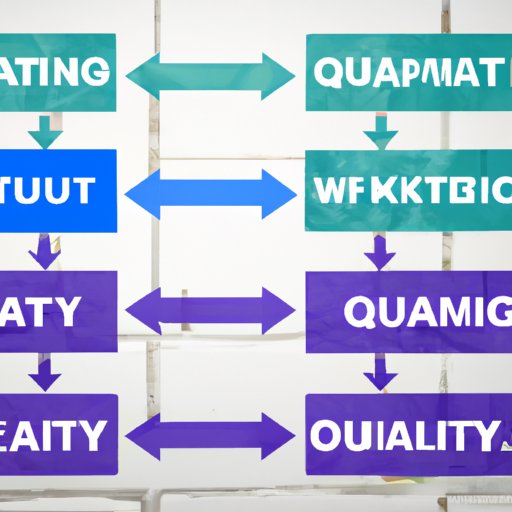Introduction
Quality assurance (QA) automation testing is a critical part of software development and deployment. It involves creating automated tests that check the functionality of code before it’s released into production. Automated QA testing can help reduce errors and improve the quality of the software by ensuring that it meets the requirements set out by the development team.
Becoming a QA automation tester requires a combination of technical knowledge, problem-solving skills, and attention to detail. In this article, we’ll explore the skills and qualifications needed to become a QA automation tester, as well as the types of tests involved in the process and the steps involved in the testing process.

Skills Needed to Become a QA Automation Tester
To become a successful QA automation tester, you need to have the right skills and qualifications. Here’s what you need to know:
Education and Experience Required
Most employers look for applicants with at least a bachelor’s degree in computer science or a related field. Additionally, some employers may require applicants to have experience working in software testing or programming. Having a strong understanding of coding languages such as Java or C# is also essential.
Knowledge of Tools and Platforms Used
QA automation testers need to be familiar with the tools and platforms used in the testing process. This includes understanding how to use frameworks such as Selenium WebDriver, Appium, and TestNG. They should also have a working knowledge of continuous integration tools such as Jenkins and Travis CI, as well as automation scripting languages like Bash and Python.
Understanding of the QA Automation Testing Process
QA automation testers should have a comprehensive understanding of the entire QA automation testing process. This includes knowing how to design test plans, write test scripts, execute tests, and analyze results. They should also be able to identify potential issues and suggest solutions to ensure the quality of the software.
Types of QA Automation Testing
QA automation testing involves running a series of tests to identify any potential flaws in the software. Different types of tests are used depending on the type of application being tested and the goals of the project. Here are some examples of different types of tests used in QA automation testing:
Unit Tests
Unit tests are used to test individual units of code and verify that they are functioning correctly. This type of test focuses on the smallest parts of an application and is typically performed by developers.
Integration Tests
Integration tests are used to verify that multiple components of an application are working together correctly. They focus on the interaction between different parts of the system and are typically performed by developers and testers.
Functional Tests
Functional tests are used to validate the functionality of an application. They focus on verifying that each feature of the application is working correctly and are typically performed by testers.
Regression Tests
Regression tests are used to verify that changes to an application have not caused any unexpected behavior. They focus on ensuring that the application is still functioning correctly after changes have been made and are typically performed by testers.
Case Studies of Successful Projects
There are many examples of successful projects that have leveraged QA automation testing. One example is the development of a medical device for monitoring blood glucose levels. The team used automated tests to verify that the device was accurate and reliable. As a result, the device was approved for use in clinical trials and is now available commercially.

Steps Involved in QA Automation Testing Process
QA automation testing involves several different steps. Here’s an overview of the process:
Designing Test Plans
The first step in the QA automation testing process is designing test plans. Test plans are detailed documents that outline the objectives, scope, and approach of the testing process. They should include information about the environment, data, and expected outcomes of the tests.
Writing Test Scripts
Once the test plan has been created, QA automation testers can begin writing test scripts. Test scripts are programs that automate the execution of tests. They should be written in a way that allows them to be reused for future tests.
Executing Tests
Once the test scripts have been written, they can be executed. During this step, the scripts are run against the application to check for any errors or defects. If any issues are identified, they should be addressed before the application is released.
Analyzing Results
The final step in the QA automation testing process is analyzing the results. This involves reviewing the results of the tests and determining whether or not they meet the criteria set out in the test plan. Any issues that were identified during the testing process should also be addressed.
Conclusion
Becoming a QA automation tester requires a combination of technical knowledge, problem-solving skills, and attention to detail. To get started, you’ll need to have the right education and experience, as well as a strong understanding of the tools and platforms used in the testing process. You should also have a comprehensive understanding of the different types of tests used in QA automation testing and the steps involved in the process. With the right skills and expertise, you can succeed in this field and help ensure the quality of software applications.
(Note: Is this article not meeting your expectations? Do you have knowledge or insights to share? Unlock new opportunities and expand your reach by joining our authors team. Click Registration to join us and share your expertise with our readers.)
